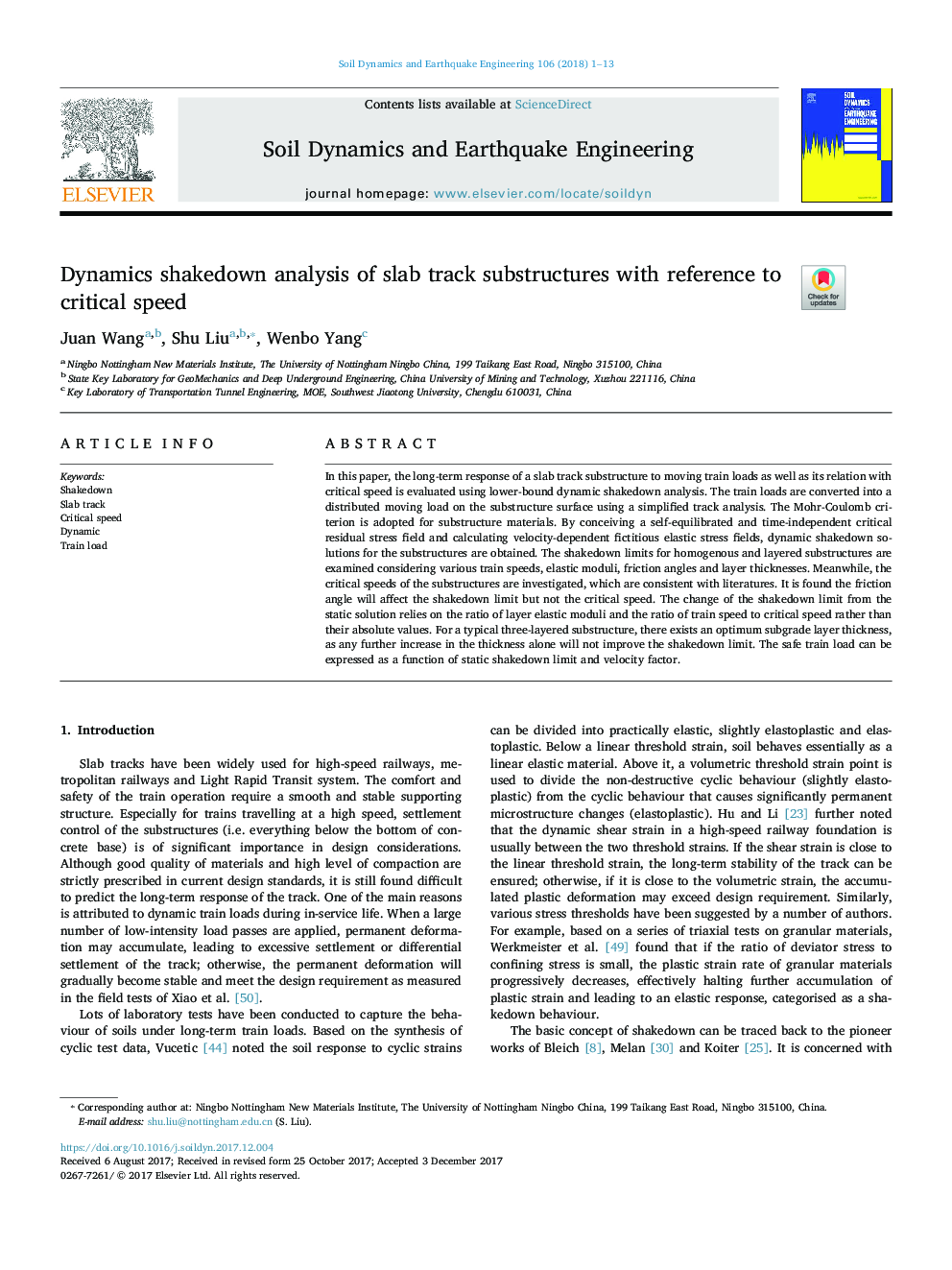| Article ID | Journal | Published Year | Pages | File Type |
|---|---|---|---|---|
| 6770705 | Soil Dynamics and Earthquake Engineering | 2018 | 13 Pages |
Abstract
In this paper, the long-term response of a slab track substructure to moving train loads as well as its relation with critical speed is evaluated using lower-bound dynamic shakedown analysis. The train loads are converted into a distributed moving load on the substructure surface using a simplified track analysis. The Mohr-Coulomb criterion is adopted for substructure materials. By conceiving a self-equilibrated and time-independent critical residual stress field and calculating velocity-dependent fictitious elastic stress fields, dynamic shakedown solutions for the substructures are obtained. The shakedown limits for homogenous and layered substructures are examined considering various train speeds, elastic moduli, friction angles and layer thicknesses. Meanwhile, the critical speeds of the substructures are investigated, which are consistent with literatures. It is found the friction angle will affect the shakedown limit but not the critical speed. The change of the shakedown limit from the static solution relies on the ratio of layer elastic moduli and the ratio of train speed to critical speed rather than their absolute values. For a typical three-layered substructure, there exists an optimum subgrade layer thickness, as any further increase in the thickness alone will not improve the shakedown limit. The safe train load can be expressed as a function of static shakedown limit and velocity factor.
Related Topics
Physical Sciences and Engineering
Earth and Planetary Sciences
Geotechnical Engineering and Engineering Geology
Authors
Juan Wang, Shu Liu, Wenbo Yang,
